Chervil
What is Chervil?
Chervil is an edible herb that is widely used in kitchens around the world. It is a very popular herb with various culinary and medicinal uses. It also has some health benefits to offer.
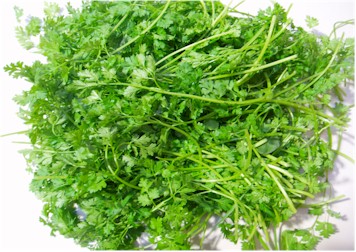
Chervil
Table Of Content
It is a plant related to Parsley and is used for cooking and seasoning as an edible herb or spice. This herb is especially useful and popular for French cuisine and is one of the main ingredients of the the French herb blend known as “Fines Herbes”.
There are two main types of this herb – Plain and Curly. This herb is known by many names such as:
- Beaked Parsley
- Gourmet Parsley
- French Parsley
- Salad Chervil
- Garden Chervil
Chervil Scientific Name
The scientific name for these plants is Anthriscus cerefolium.
Chervil Scientific Classification
These plants are scientifically classified in the following way:
- Kingdom: Plantae
- Phylum: Magnoliophyta
- Class: Magnoliopsida
- Order: Apiales
- Family: Apiaceae
- Genus: Anthriscus
- Species: Anthriscus cerefolium
Chervil Origin and History
These plants originally came from Eastern Europe. Later, the colonizing Romans extended the range and usage of this herb in a wider area.
A volatile oil used to be extracted from the Chervil leaves. The aroma of this oil was similar to that of the biblical resinous substance ‘myrrh’. Due to this, the oil used to be called as ‘myrrhis’.
In ancient times, the plant was believed to symbolize revitalization and a new life.
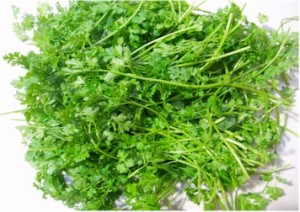 Picture 1 – Chervil
Picture 1 – Chervil
Source – adamsonestopshop.com
Chervil Description
Here is a general description of how these plants look:
Leaf
This herb is a member of the carrot family and there is a strong resemblance between the leaves of this plant and carrot-tops. The leaves are of a light green color and look a little like Ferns and are very delicate. The Curly variety of the herb has curled leaves.
Height and Width
The plants usually grow somewhere between 12 inch- 24 inch (40-70 cm) in height. The average width of these plants is between 6 – 12 inches.
Flower
The flowers of these plants are small and white in color.
Fruit
The fruits are smooth and oblong.
Taste
It has a mild flavor that tastes like a combination of Anise and Parsley.
“Wild Chervil” is a plant that looks similar to the Anthriscus cerefolium or French Parsley. These plants are supposed to be edible, though their aroma (almost like the French Parsley, but with a strong flavor of carrot) is a little odd to be used in cooking.
Chervil Recepies
This herb has numerous delicious recipes to its name and is widely useful in kitchens around the world. Following are some of its uses in the kitchen:
- It is one of the main elements of the French herb mixture “Fines Herbes”, the other ingredients being parsley, tarragon and chives.
- Young leaves of this plant are widely used in preparations like salads, soups, sea foods, stews etc.
- It can be used in the similar way as Parsley and is a good flavoring agent for fish, chicken and egg dishes. But its aroma gets ruined in high temperature. Due to this, the chopped leaves of this plant are added to a dish as a “finishing” ingredient so that the flavor remains intact.
- Chervil can also be used as a substitute for Tarragon.
- It is used to prepare some popular sauces like the Béchamel and Ravigote.
- The flowers of this plant are also used in cooking. They are used in the filling and to add flavor to the food.
- Dried Chervil is used as a spice to add flavor and color to any dish.
- There is another variety of this plant called the “Root Chervil”. The root of these plants was very popular as vegetables in UK and US in a former time. Even today, this root is used in soups and stews in French cuisine.
 Picture 2 – Chervil Photo
Picture 2 – Chervil Photo
Source – nmhm.org
Nutritional Information of Chervil
Here is some information about the nutritional value of this plant.
Vitamin
It can be a great source of the vitamins A and C. It also contains some of the B vitamins in a smaller but considerable amount.
Minerals
It is also a rich source of various minerals like:
- Iron
- Calcium
- Potassium
- Manganese
- Zinc
- Copper
- Magnesium
- Phosphorous
- Selenium
This plant can be consumed in large quantities without any potential danger to health. As a result, high nutrition can be gained from it.
Medicinal Uses of Chervil
This herb has many health benefits to offer. Following are some of its medicinal uses and the benefits derived from it:
- It can be used as a skin tonic and to cure various skin problems such as Acne, Eczema etc.
- It helps to reduce cellulite.
- It can be taken as herbal tea for better blood circulation.
- It can be beneficial to clear up haemorrhoids.
- It is used to treat high Blood Pressure.
- Chervil tea can be very helpful to sooth irritated or tired eyes.
- This plant can also be beneficial for various liver problems.
- It has been used to cure flu, cough and cold for a long time.
- It also helps in curing various stomach disorders and digestion problems.
Chervil Cultivation
To cultivate the plant, the seeds should be sown during early spring or autumn. The germination of the seeds takes 10 to 14 days. These plants cannot grow well in excessive heat, so they should not be exposed to direct sunlight. But growing Chervil absolutely away from the winter sunlight is not advisable. They need moist soil and a semi-shaded area to grow properly. The soil should be well fertilized and rich in organic materials. The plants need regular watering in order to grow properly.
One can also grow this plant in a pot. This is an annual herb and dies after flowering once. The white flowers help the plant to “self- seed”.
These herbal plants take 6 to 8 weeks to be ready for cultivation. The young leaves should be harvested before the flowers appear. The flowers are also collected and used in cooking.
Preservation of Chervil
The leaves of this herbal plant lose their flavor and aroma if dried. So, it is better to freeze them in order to preserve them. Before drying them in freezer, one should blanch the stems in boiling water (for 1 minute) and then cool them in ice water. The water should be drained completely before chopping the leaves. Then the chopped leaves should be spread out on a sheet or tray and placed in the freezer. The dried leaves should be preserved in a container or a freezer bag and placed back in the freezer.
Chervil Picture
Here are some photos for you to check out the appearance of these plants.
Chervil is an herbal plant that has endless benefits to offer. This plant has been used by humans for many years and for diverse reasons. It may safely be said that it will continue to be used by generations to come.
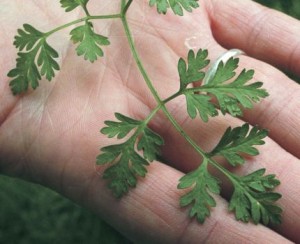 Picture 2 – Chervil Picture
Picture 2 – Chervil Picture
Source – vegetablegardener.com
Picture 4 – Chervil Image
Source – gardenamateur.blogspot.com
References:
http://www.pfaf.org/user/Plant.aspx?LatinName=Anthriscus+cerefolium
https://theepicentre.com/spice/chervil/
http://allfoodsnatural.com/condiments/herbs/267-chervil.html
- by Deepamala Bhattacharya
- September 7th 2011

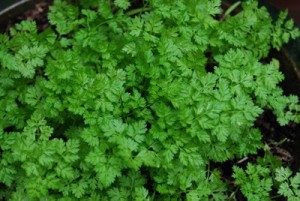
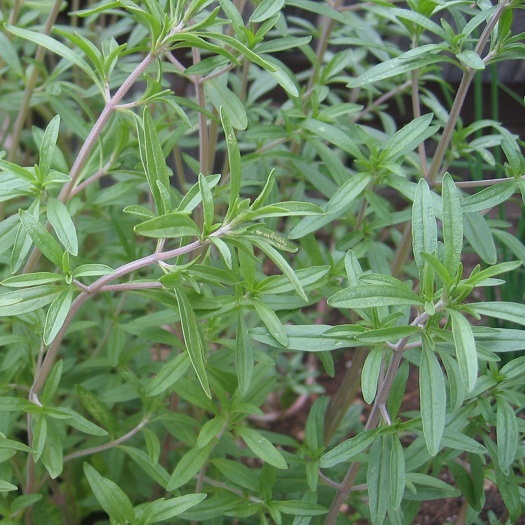
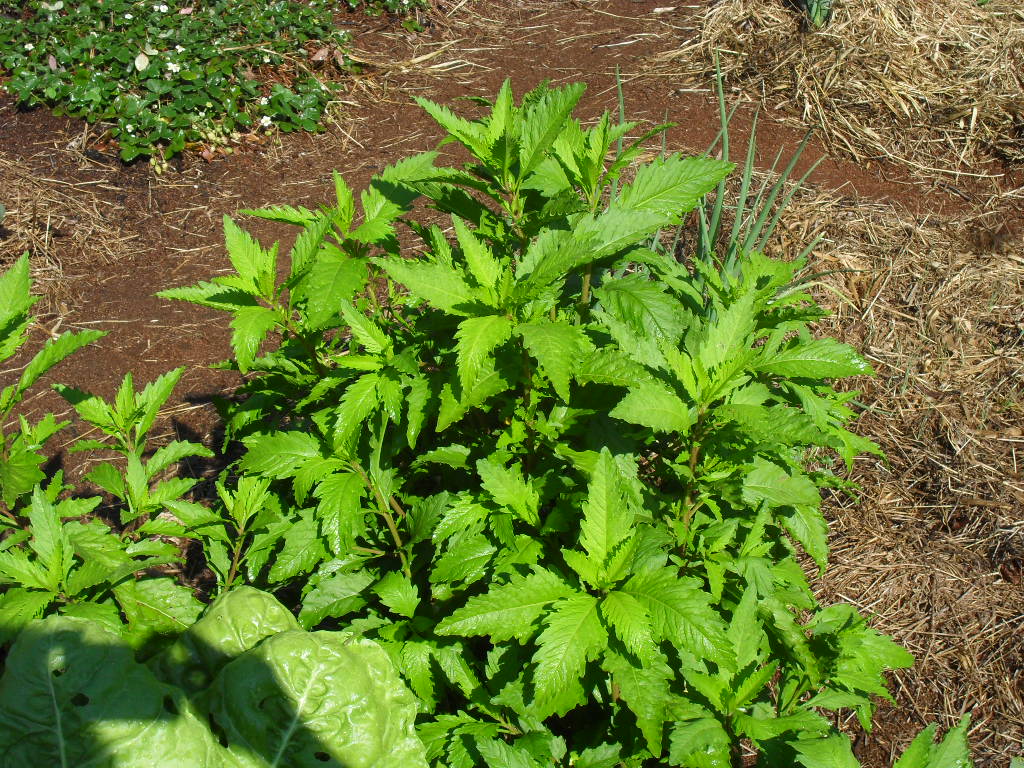

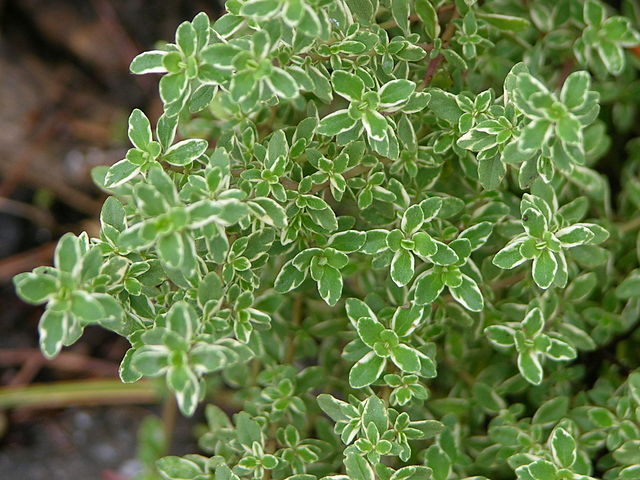















Leave a Reply